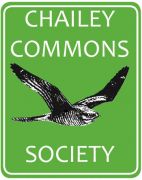What to see on the Commons
Flora
Chailey Commons support a wide variety of flora with each Common having its own special plants too.
Undoubtedly, one of the most colourful is the bright yellow Common Gorse. This spiny evergreen shrub is in flower from December to June although it can be seen in bloom virtually throughout the year and has a strong smell of coconut. Dwarf gorse is also present, flowering from July to October but the flowers are a paler yellow and smaller.
In the Spring, the first plants to look out for are the Wild Daffodils which really brighten up the dead Bracken, closely followed by Primroses displaying their pin eyed thrum-eyed varieties (photo) and violets such as the Common Dog Violet which has a pale spur and the Early Dog Violet which has a dark one. The floral succession continues into May and June with the appearance of Bluebells in the woodland areas and Heath Spotted Orchids in amongst the Bracken.
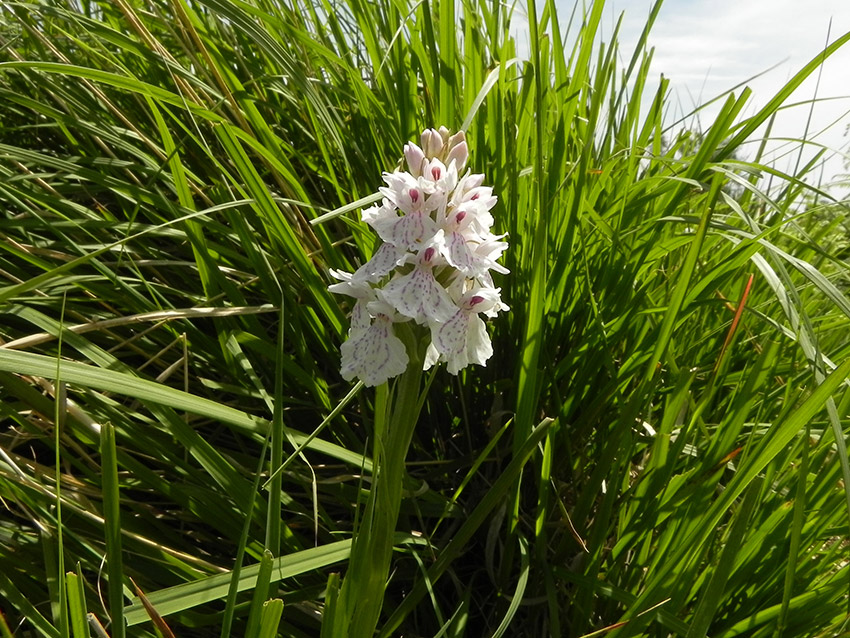
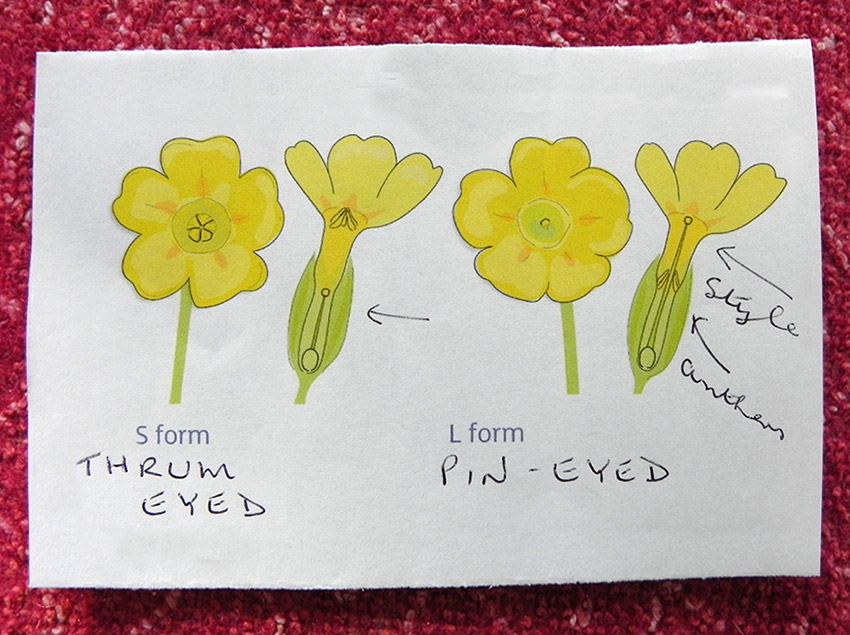
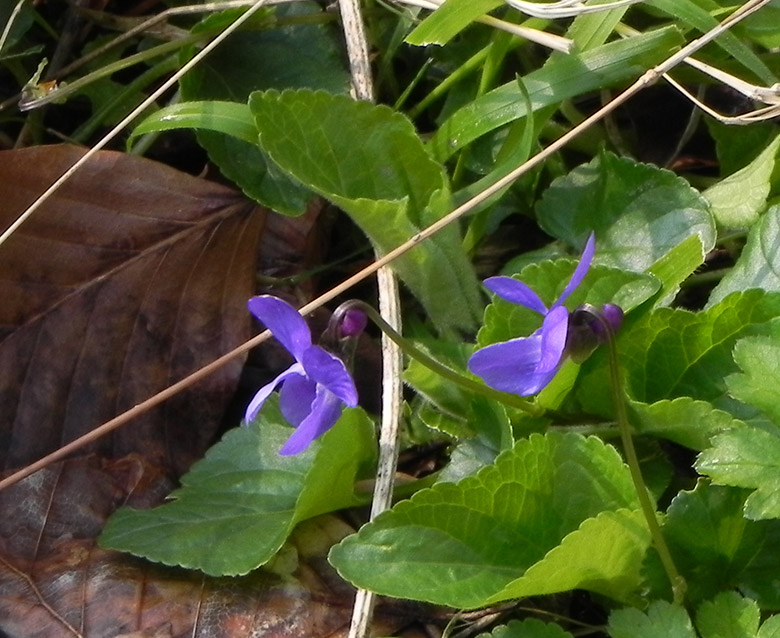

There is then an explosion of pink and purple in the summer with the Commons supporting all three heather species, notably Ling (Heather), Cross-leaved Heath and Bell Heather. The purple Bell Heather is often the first species to flower from the end of May onwards followed by the pinker Heather or Ling. These two favour the drier areas whereas Cross-leaved Heath prefers the damper, wetter areas. (3 photos)
From early summer through to autumn, the Commons are dotted everywhere with splashes of yellow Common Tormentil (photo) – a ground hugging plant that can be identified from its four petals and which provides nectar for solitary bees.
In autumn, the round, purple heads of Devils-bit Scabious can be seen while the red berries of the Wild Arum or Lords and Ladies are also prominent.
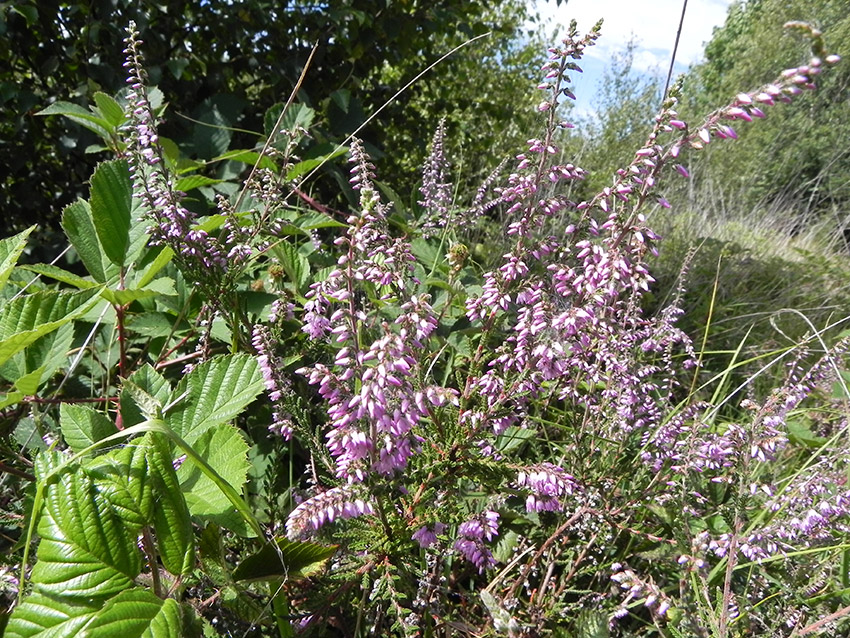


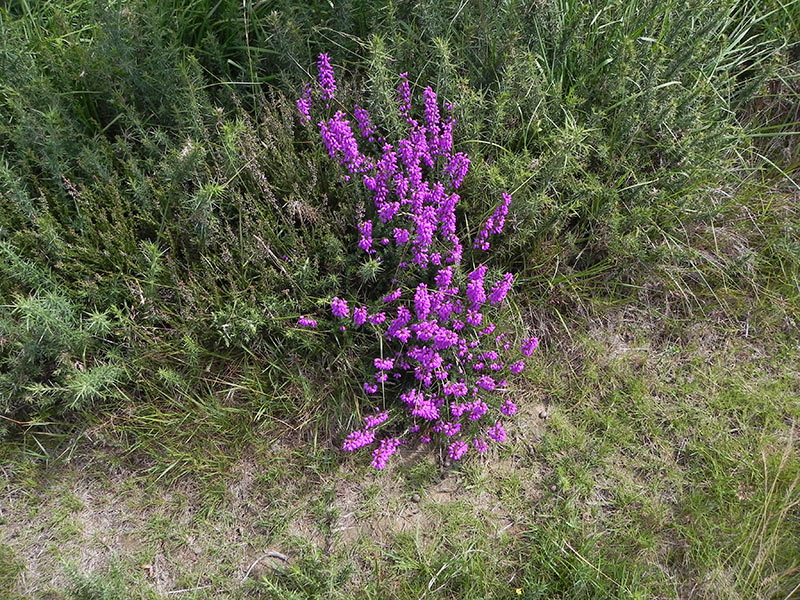
Fungi
The Commons host a wonderful range of fungi from Puffballs to the well-known Fly Agaric including some fantastic names such as Lemon Disco and Petticoat Brittlegill. Every autumn the Society hosts a fungi walk. The list of species is from the 2022 event.
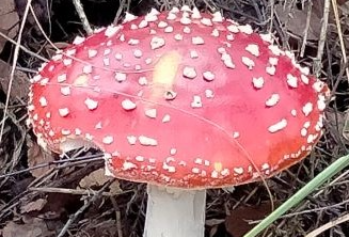

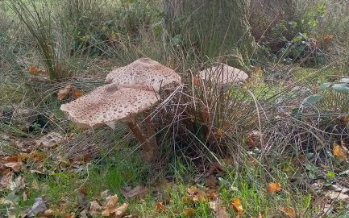

| Species | Common name |
| Boletes | |
| Boletus edulis | Porcini, Cep, Penny Bun |
| Boletus badius | Bay Bolete |
| Leccinum scabrum | Brown Birch Bolete |
| Xerocomellus chrysenteron | Red-cracking Bolete |
| Gilled Fungi | |
| Amanita citrina | False Deathcap |
| Amanita excelsa var spissa | Grey-spotted Amanita |
| Amanita muscaria | Fly Agaric |
| Amanita rubescens | Blusher |
| Clitocybe odora | Aniseed Funnel |
| Coprinellus micaceus | Glistening Inkcap |
| Gymnopus butryacea | Buttercap |
| Hypholoma fasciculare | Sulphur Tuft |
| Lactarius blennius | Beech Milkcap |
| Lactarius hepaticus | Liver Milkcap |
| Lactarius quietus | Oakbug Milkcap |
| Lactarius rufus | Rufous Milkcap |
| Lactarius subdulcis | Mild Milkcap |
| Lactarius turpis | Ugly Milkcap |
| Lactarius tabidus | Birch Milkcap |
| Mycena galericulata | Common Bonnet |
| Mycena pelianthina | Blackedge Bonnet |
| Mycena rosea | Rosy Bonnet |
| Paxillus involutus | Brown Rollrim |
| Russula aeruginea | Green Brittlegill |
| Russula delica | Milk White Brittlegill |
| Russula nigricans | Blackening Brittlegill |
| Russula ochroleuca | Ochre Brittlegill |
| Russula vesca | Petticoat Brittlegill |
| Bracket Fungi | |
| Bjerkandera adusta | Smoky Bracket |
| Ganoderma australe | Southern Artist’s Bracket |
| Piptoporus betulinus | Birch Polypore, Razor Strop Fungus |
| Polyporus leptocephalus | Blackfoot Polypore |
| Polyporus tuberaster | Tuberous Polypore |
| Trametes versicolor | Turkeytail |
| Cup Fungi | |
| Bisporella citrina | Lemon Disco |
Insects – Butterflies
Insects are a critical part of any ecosystem but often go undetected and unseen.
The most visible are butterflies with a current list of 27 species having been recorded since 2012 on the Commons.
The first of the year is often the handsome yellow Brimstone whose larval plant is Alder Buckthorn, while Peacock, Holly Blue and Orange- tip appear soon afterwards. Summer sees the emergence of the browns including Ringlet, Gatekeeper and Meadow Brown along with the occasional Wall Brown. Common Blues can be seen in sunny grassy areas looking for vetches and trefoils, while Chailey Common was one of the last sites in the Sussex Weald you could find Silver Studded Blue butterflies, but sadly they seem to be gone from the area now.
Dainty Small Coppers whose caterpillars feed on Common Sorrel and Sheep’s Sorrel can be seen from the spring onwards but are more likely encountered in later summer feeding on Ragwort, similarly Red Admiral, Painted Lady and Small Tortoiseshell are more common at this time although the once very abundant Tortoiseshell has severely declined in recent years. If one is very lucky, the occasional migratory Clouded Yellow may also be seen.
Butterfly species recorded
Hesperididae
Grizzled Skipper
Small Skipper
Large Skipper
Pierdae
Orange Tip
Large White
Small White
Green Veined White
Clouded Yellow
Brimstone
Nymphalidae
Wall
Speckled Wood
Small Heath
Ringlet
Meadow Brown
Gatekeeper
Marbled White
Red Admiral
Painted Lady
Peacock
Small Tortoiseshell
Comma
Lycaenidae
Small Copper
Purple Hairstreak
Green Hairstreak
Holly Blue
Brown Argus
Common Blue
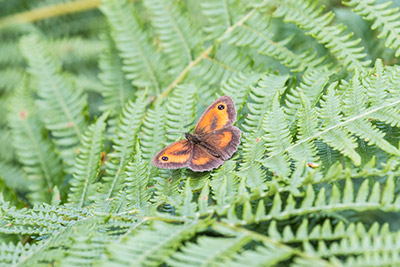
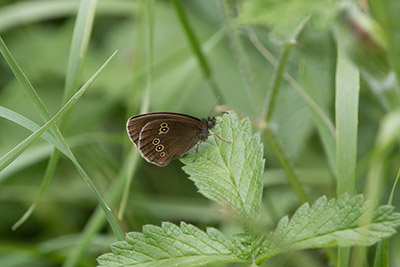
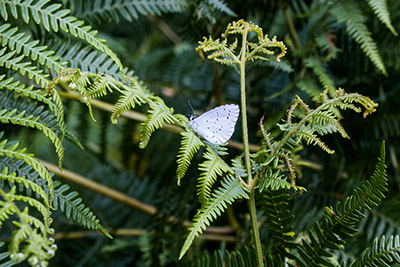
Insects – Dragonflies and Damselflies
The first of the dragonflies and damselflies is usually the Large Red Damselfly which emerges in late April / early May while summer brings the electric blue of a male Emperor as it dashes over the heathland. Common and Migrant Hawkers may also be seen in later summer with brick red Common Darters usually appearing at the end of the season.
Insects – Other
One species definitely worthy of mention due to their impressive living quarters is the Wood Ant – composed of soil, twigs, leaves and pine needles, the domed nest can reach a metre high and comprises a complex network of tunnels, galleries and chambers all designed to carefully control temperature and humidity. Wood Ants are predatory insects and while they will take caterpillars and beetles, ninety percent of their diet comes from honeydew produced by aphids which feed on trees and shrubs. In the spring if you drape a Bluebell over a nest you will see it turning pink in a matter of seconds!

Another extraordinary insect on the Commons is the Glow-worm – these are in fact beetles but it is on warm, muggy nights in June and July that the females emit their eerie, bright green-yellow light from their abdomens in order to attract the males with their large photosensitive eyes. Adults only live for a few weeks to breed and die soon after. Females can lay up to 100 eggs which are laid on the ground where the hatched larvae feed on slugs and snails for about two or three years before fully maturing.
Birds
Winter can be quiet for birds on the Commons but there is usually a small population of wintering Linnets and the occasional Woodcock if cold weather bites.
Spring sees the arrival of the warblers with Blackcap, Chiffchaff, Whitethroat and particularly Garden Warblers, while singing Willow Warblers are generally just moving through to their more northerly breeding grounds. House Martins arrive back at their nest sites at St Georges while pairs of Long Tailed Tits, Yellowhammers and Stonechats will be nesting in the gorse with Bullfinches in the thicker hedges. Cuckoos can be heard but are often just short term visitors. However, the Commons star birds are probably the Nightjars which arrive back from their wintering grounds in Africa in May and can be heard making their peculiar churring calls in the late June evenings.
Early autumn time can see good movements of Swallows and Martins heading back south and if one is lucky, the odd Spotted Flycatcher can be seen amongst the roving flock of warblers and tits making the most of the remaining insects. Redwings from Scandinavia and Iceland start arriving in later autumn and will strip all the hawthorns of their berries before using the Commons and surrounding fields for their winter sustenance.
Reptiles
There are occasional sightings of Common Lizards while Adders and Slow Worms have not been seen for several years. We generally have limited information for reptiles so would be very happy to receive any sightings.
Amphibians & Other aquatic life
Frogs and toads are likely present although not often seen while newts including the Great Crested Newt have been recorded.
The ponds host other interesting species including the Pond Mud Snail and the fascinating Fairy Shrimp, a beautiful translucent crustacean that depends on clean water ponds that annually dry out. Only a proportion of the shrimp’s eggs hatch each time a pond fills with water while others will remain dormant for many years, in some cases decades. This means that if a pond dries out before the adults have had time to breed all is not lost and the cycle can continue the next time the pond fills.
Mammals
Rabbits are numerous and clearly play a role in maintaining some of the shorter grass swards. Deer are present although rarely seen, while Foxes and Badgers also live on or around the Commons. Our current knowledge of the bats on the Commons is still limited but Pipistrelles and Noctules have been recorded by bat detector.
Records
The Society does hold historical survey records for the Commons which are available on request.
